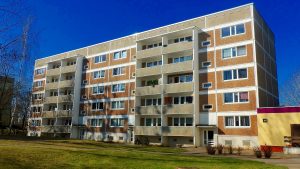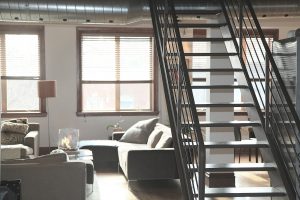Since the pandemic started in February 2020, there have been several hotel bankruptcy cases in Japan.
Most of them are old hotel buildings however some have been found as brand-new buildings.
Therefore, today, I would like to analyze how we can use those abandoned hotels. In other words, the possible options for us to work with conversion scenarios.
The possible use are as follows:
1 Residential
2 Nursing home (Care center for aged people)
3 Employee flats or dormitory
4 Remote Work facility (Office + Residential)
5 Student accommodation
6 Storage rooms

Let me explain one by one
1 Residential

Needless to say, it’s the most popular use for the conversion. Once before, the conversion had been done in the opposite direction: from residential to hotel. However, under the current uncertainty and new normal brought by the pandemic, residential has been the use supported by most of institutional investors.
As I demonstrated under the following, the rent of residential will be decreasing as time passes.
Why does Japanese brand-new residential rent decrease?
Furthermore, given the consumption tax receipt and payment, the owner may not save a lot of tax and in that sense, residential use looks less profitable. However, to take the safe side, we may consider conversion to residential as the wise and cleaver choice.
2 Nursing home (Care center for aged people)

This has been seen in many regions in Japan. Generally, the nursing home operators have preferred having their facilities in city center locations. People can get active among lively & energetic environment; patients’ families can easily access to the facility therefore operators have wanted to have facilities in city central location. However most importantly, a project with the central location never gets paid due to the over investment.
Nevertheless, COVID 19 has cleared several hurdles for them, the operators. Therefore, some buildings have been purchased by those nursing home operators. Good things about them are lower initial investment, better location, and advantages in sourcing staffs. Thus, this has been seen as a good alternative for hotel property.
3 Employee flats or dormitory

Say, around 30-40 years ago, so called Dankai, or sub- Dankai generations committed themselves to working hard for companies. Especially for single male workers, it was more convenient to live in the corporate dorm even though they had to be patient of less privacy, inconvenience in enjoying single lives.
However, now a days, people’s privacy has been more comfortably protected by technologies. For instance, young residents can stay all the week ends at flats, enjoying their favorite music with high-tech audio set and games with their installed monitors. Noise can never get released in neighboring flats, and with 24 hours stand-alone security, residents never meet each other in the common spaces. As long as the rent is reasonable, younger generation would never hesitate to live in such facility. This is of course a good for companies to retain younger workers.
4 Remote Work facility (Office + Residential)

For instance, lower floors can be converted into office spaces, address free system, personal belongs storage space, and cafeteria& bars to chat with colleagues. Upper floors can be used as accommodations. Users do not need a small kitchen for their cooking but some simple coffee spaces and small refrigerators to keep their stuffs. Thus only a few renovations may be needed to make such facilities. The large companies under Japanese conglomerate may lease up such facilities for their employees. This looks stable and safe side investment, taking into account the future demand.
5 Student accommodation

Japan identified several universities as the academic institutions to be survived over middle to long term. They were called “Super Global Universities”. Therefore, if the hotel is located close to the aforementioned universities, student accommodation may be one of the options when you think about conversion.
The list of Super Global Universities (Wikipedia JP only)
For student accommodation, common space needs to be spacious and full functioned for students to enjoy their lives. If some student accommodation operator takes up the operation, institutional investors may seriously consider investing those facilities despite of the conversion cost.
6 Storage rooms

COVID 19 has more encouraged people to pile up stocks rather than to keep themselves to be neat and tidy minimalists. Therefore, if they find a nice storage spaces in their neighborhood area, that would be nice options for them. When I was living in the central Tokyo, my flat was about 45 sqm, however, I was allocated a storage space with 3.3 sqm located in the basement. That helped our stuff management a lot. I realized that storage doesn’t have to be in the same building but accompanying a so-called courier service would be more convenient for users to take those spaces.
Thus, again, to sum up the possible use of hotel buildings are as follows;
1 Residential
2 Nursing home (Care centre for aged people)
3 Employee flats or Dormitory
4 Remote Work facility (Office + Residential)
5 Student accommodation
6 Storage rooms

Taking into account the stability over middle to long term, I feel,
1 Residential or 3 Employee Dorm would be the most recommendable.
2 Nursing home and 6 Storage can be considered depending on the economy, I mean feasibility
4 Remote work and 5 Student accommodation may be the location oriented.
Under each scenario, thorough analysis by professional is recommended.
The transition of hotel bankruptcy cases is found under the following site (Japanese only)
https://hotelbank.jp/coronavirus-bankruptcy-hotel-july12020/
Further queries or doubts, please email to ytomizuka@abrilsjp.com
News Letter subscription is here





